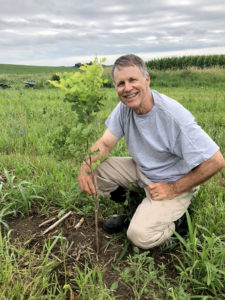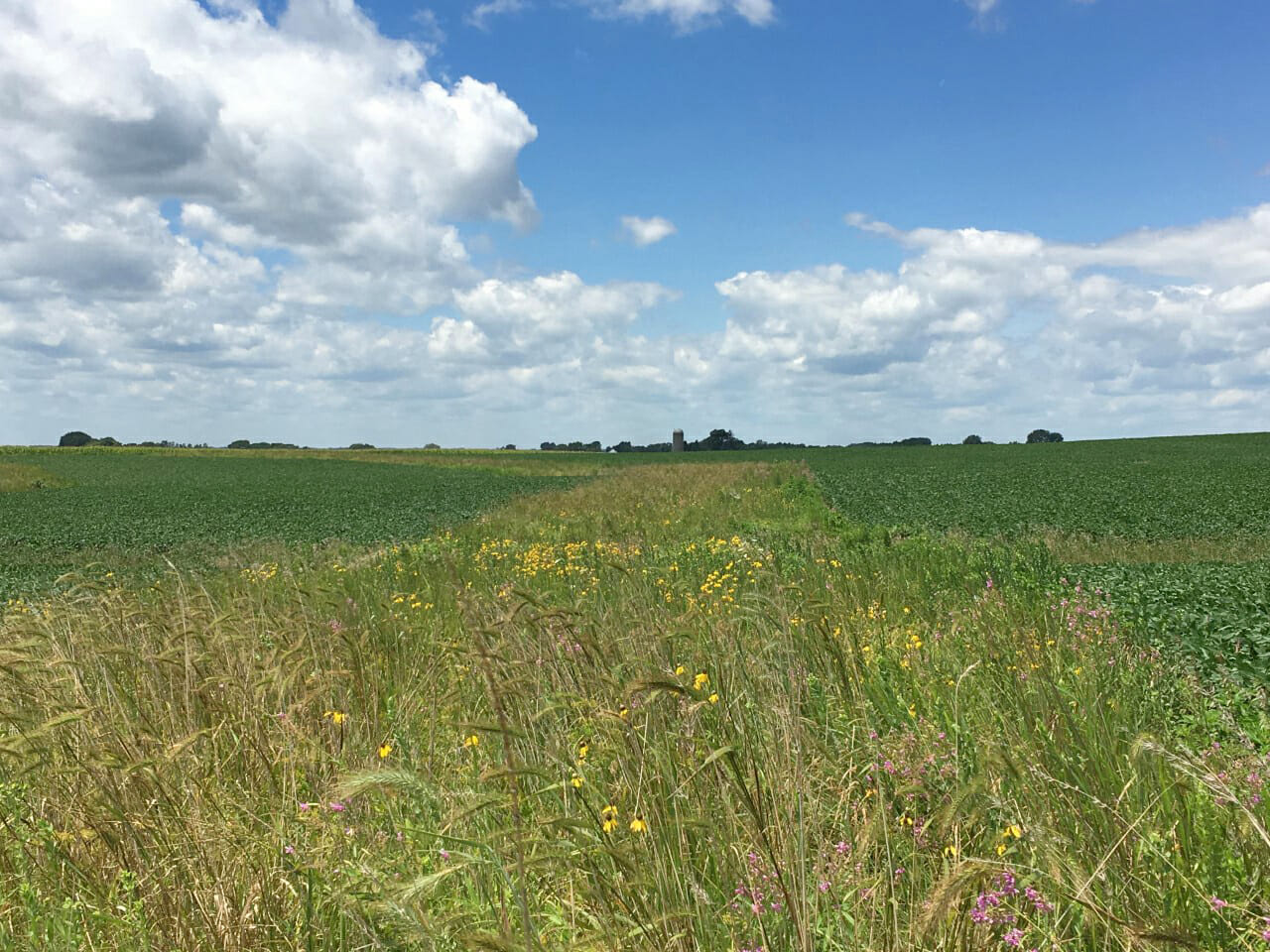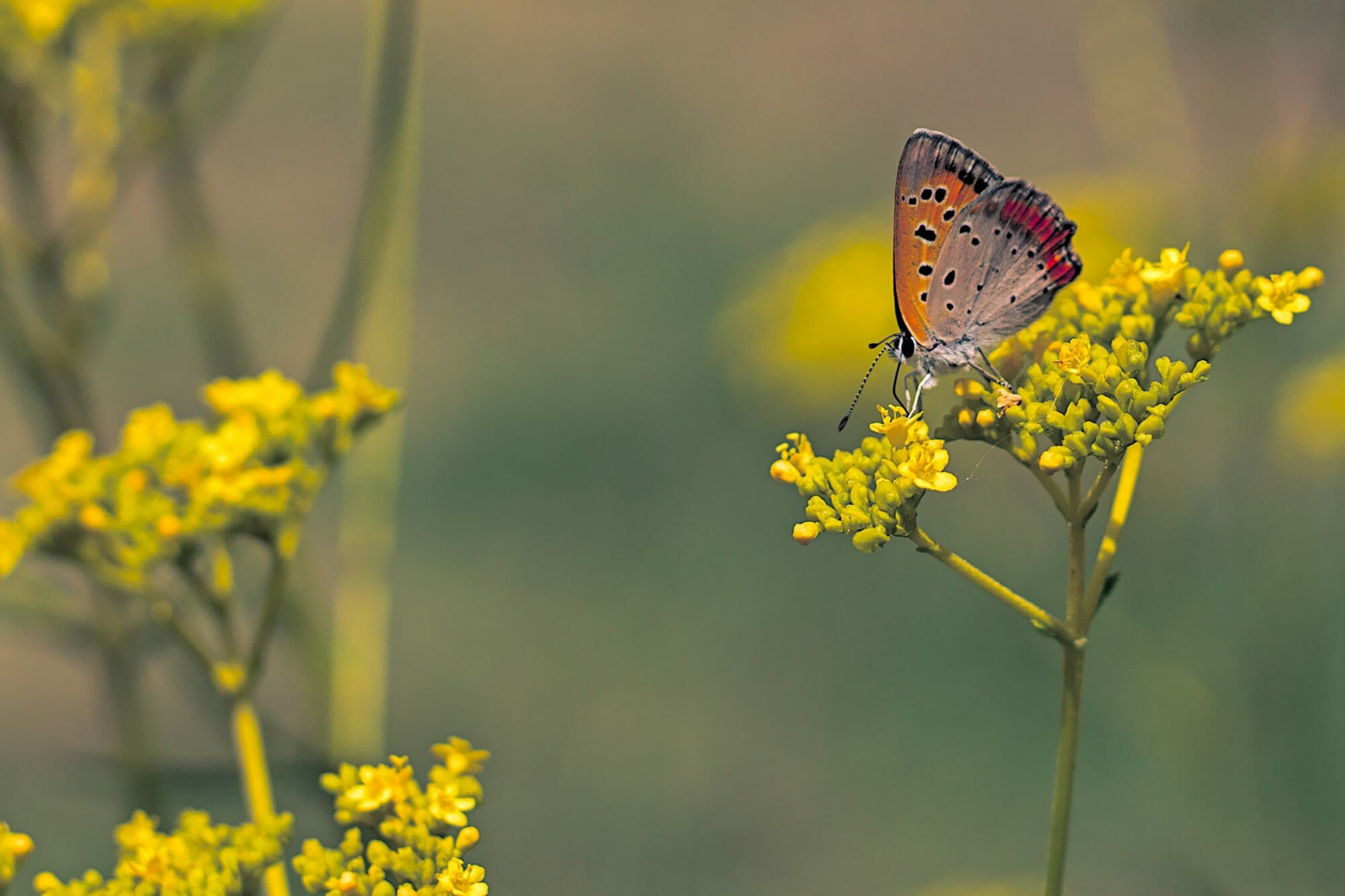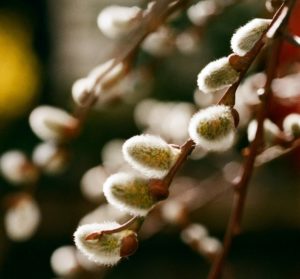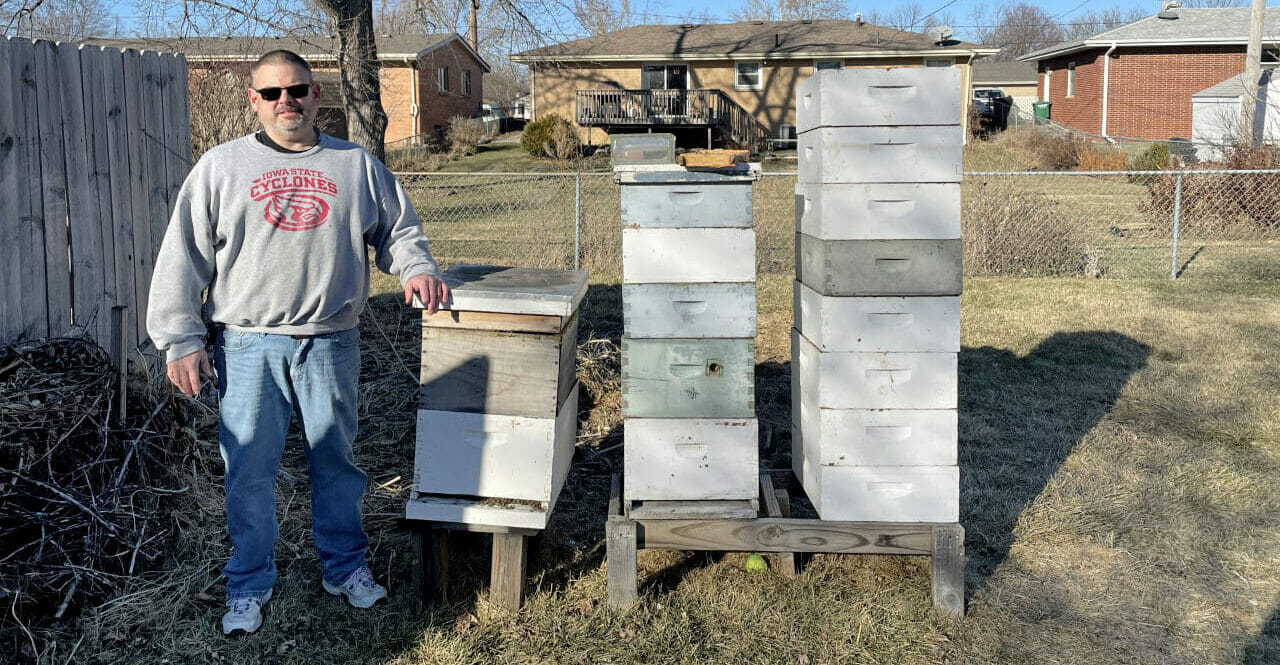Nourishing Nectar
When hungry pollinators emerge in early spring, they’re finding vital early-blooming flowers, trees and grasses on PFI member farms.
Gary Guthrie remembers the day he had his epiphany about how he could help restore the abundance of pollinators he recalled from his childhood. It was a “beautiful, sunny fall day in September,” Gary says.
He had planted a half-acre patch of prairie in 2015 – the first of several subsequent seedings – next to his house in rural Nevada, Iowa, where he also raises 145 acres of corn, soybeans and vegetables at Growing Harmony Farms. Part of his motivation with that first patch had been sentimental – to add back some habitat in response to the decline in pollinators he’d witnessed since his youth.
His father had been an entomologist studying European corn borers, an invasive insect that can devastate corn plants, and Gary remembered how thick with bugs the air could be. “I can remember as a kid here in Iowa, the windshield would be plastered with corn borers when you went for a drive – that and lots of other insects. Nowadays, you’re lucky to have one. In trying to control for the pests, over time, we’ve diminished the beneficial pollinators as well.”
That warm, clear September day, Gary’s young prairie happened to be humming with insect activity. “I went out there and was stunned by the level of buzzing insects, especially the number of bumblebees, and I had an epiphany: What if I could increase the numbers of those insects from my childhood around my home?
“It was already September, so I began to make plans for plantings that would not only provide for them in the summer and fall, but the very early springtime as well, when most things are not blooming yet.”
Restoring Pollinator Habitat
As Gary realized in that moment, if he wanted to help pollinators, it wasn’t enough to provide nectar resources just in summer and fall. It’s true that the flowers and milkweeds of Iowa’s hot mid-summer season are crucial food sources at those times of year. But ants, bumblebees and other pollinating insects start to stir under leaves and snags long before the blooms of summer are on the landscape to offer up their nourishing nectar.
Historically, as these insects emerged from their winter slumber, they found an abundance of early-flowering plants to sustain them in Iowa’s prairie, savanna and woodland ecosystems. But as settlers ploughed prairie to plant crops and felled trees for fuel, farms and other needs, these early-season food sources dwindled.
Today, in the faint beginnings of spring, when snows may still lie upon the fields, it is still the native trees, shrubs, forbs and woodlands that play the most vital role in sustaining pollinators until the bounties of summer – and some farmers and landowners are intentionally planting this type of habitat.
“I went out there and was stunned by the level of buzzing insects, especially the number of bumblebees, and I had an epiphany: What if I
could increase the numbers of those insects from my childhood around my home?”– Gary Guthrie
For Gary, the results of that first half-acre prairie planting awed him – and ignited his resolve to do even more. He has since installed over 4 acres of prairie strips on his farm, each containing around 150 species of grasses and forbs. He has taken care to include early-flowering trees and shrubs, which are often the only natural nectar sources for newly awakened pollinator species in the early spring.
“I was very excited when I went out one day at the end of March and there was yellow everywhere,” Gary says. “The golden Alexander had bloomed. It was great to see all that color after the winter, and then to see all the bees buzzing around. It was a scene out of my childhood, to see those early-blooming plants that aren’t on the landscape as much now.”
Alongside golden Alexander, Gary also planted frost aster, heath aster, purple coneflower and common mountain mint, all of which are classified as early-blooming prairie plants and excellent sources of nectar and energy in the spring. “At the end of the day, I really wanted to re-create those memories I have as a kid here in Iowa, the ones where there were insects everywhere,” Gary says. “These prairie strips were installed with that dream in mind.”
Planting Trees for Bees
Gary’s efforts have resulted in an oasis of early-spring foraging opportunities for pollinators on his farm. Beyond planting prairie strips, Gary has also left many of the trees on his farm in place, including a crab apple and several maples. “I have seen bees and other insects crawling around on them when nothing else is growing or in bloom yet,” he says.
Cara Marker-Morgan and Lance Brisbois of Golden Hills Resource Conservation and Development in Oakland, Iowa, confirm Gary’s observations. Maintaining tree rows, they say, is the best way to support pollinators in early spring. Across Iowa’s landscape, however, many trees are being removed. “Out here in southwest Iowa, we’re seeing lots of tree rows being removed, especially along waterways,” Lance says. “Not only is that permanent cover being removed, but many of those tree species serve as an early food source for pollinators.”
Cara says many trees are removed as farms get larger and landowners buy adjacent land. “They remove the fence and tree rows to create larger tracts, not considering that trees are the first sustenance source for pollinators – particularly oak and maple varieties, which flower long before flowering grasses,” she says. “Leaving as many trees in place as possible creates that pollinator foundation and habitat that the entire food web depends on. That is something landowners can do now.”
Planting trees is also an easy way non-farmers can help provide essential early-spring pollinator food, says Zach Burhenn of Iowa Native Trees and Shrubs. “And it’s great, because trees can be placed anywhere, from large farms to suburban yards and lining city streets,” he says. “And they are all going to serve as either habitat or nectar sources in winter and the beginnings of spring.”
“Giving pollinators everything they need to thrive – like the trees, dandelions and urban gardens in the early spring – is really the best way to protect all beneficial insects that we depend on into the future.”
– Dean Coleman
For those earliest of nectar sources, Zach recommends not only oaks and maples, but American basswood and willow. “Basswood begins to flower in mid- to late May here in Iowa, and the flowers of a basswood are known for being a bee magnet that can attract pollinators for miles around, including over 100 species of bees alone.”
Willows, in particularly pussy willows, usually begin to flower even before basswood, and before most fruit trees and many other ephemerals. The pussy willow, which is labelled as either a small tree or a large shrub, is perfect for all yard sizes and produces beautiful fuzzy flowers. Even better, the pussy willow serves as a larval host for many species of butterflies and moths, as well as their first source of nectar.
Sparing the Dandelions
Bee enthusiast Dean Coleman, who runs a successful and growing honey business, Sweet Endeavors, in the heart of urban Ankeny, Iowa, says providing a big acreage is not a necessity when it comes to caring for pollinators. “I got into this venture on almost a whim,” Dean says. “I looked at my wife one day and stated that I needed a hobby, preferably one that would pay for itself. That’s how Sweet Endeavors came to be.”
Dean’s hives house nearly 100,000 Carniolan bees, a subspecies of the western honeybee known for gathering more nectar than other types of honeybee – including on cool and overcast early-spring days. “As a producer, I artificially supplement my bees’ nectar source with sugar in the hive over winter,” he says. “But as soon as those first hints of spring start, they want out to gather on their own.”
Even though he lives in the middle of an urban area, Dean says his bees find plenty of nectar sources in those first days of spring. “I have great neighbors all around and a lot of people here in town plant various types of maple trees, mostly for ornamental reasons. But they are great sources of nectar when my hives start getting active in the spring.”
Another benefit to producing honey in an urban setting, according to Dean, is the abundance of yards. “The land in town isn’t being treated with herbicides or tilled like the farmland outside of town. That means dandelions are prevalent.” Dandelions, long derided as a weed and nuisance, are an important source of nectar in early spring, when no other ground-laying flowers have bloomed. Dean has seen his bees happily gathering from these bright blooms before the snows of winter have melted. “If it gets above freezing even a little,” he says, “my hives are out and exploring!”
For this reason, organizations such as Xerces Society for Invertebrate Conservation recommend not removing leaves or dandelions from yards in the late winter and early spring. Beyond supplying a vital first source of nectar, they serve as important nesting habitat for pollinators.
“I think the health of pollinators in the future will be these urban settings, since that is where more people are moving to,” Dean says. “I want to continue to grow this business for the next 10, 20, even 30 years, into retirement.
“Giving pollinators everything they need to thrive – like the trees, dandelions and urban gardens in the early spring – is really the best way to protect all beneficial insects that we depend on into the future.”

